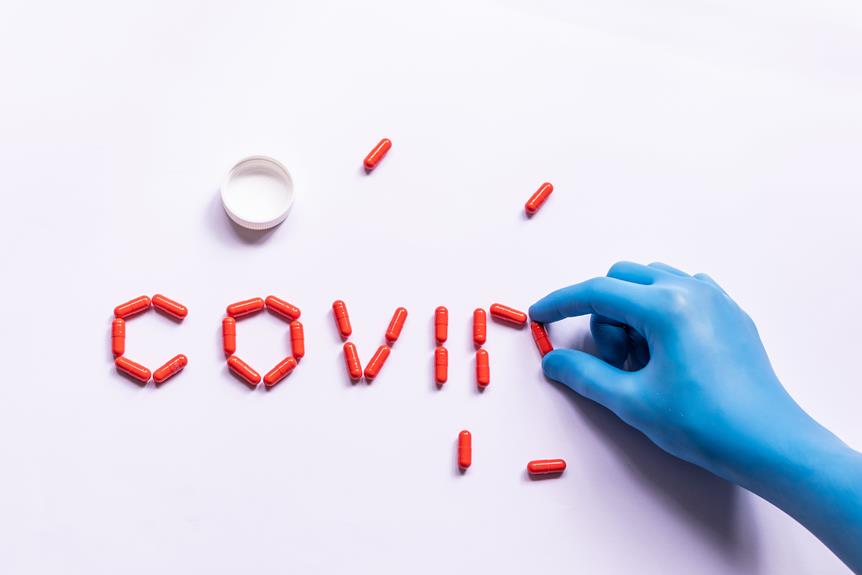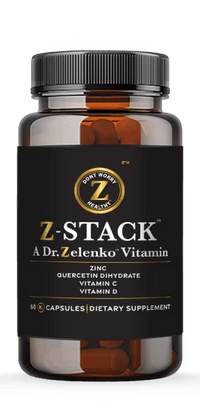As you were seeking ways to protect your health, it’s quite possible you’ve encountered the term “antiviral therapies.” These treatments represent a frontier in medicine, offering hope where there once was resignation to the grueling course of viral illnesses. You’re aware of their role in mitigating diseases like influenza and the game-changing impact they’ve had during the COVID-19 pandemic. Yet, as you consider the intricacies of these therapies, you’ll find that the landscape is riddled with complexity. From the mechanisms of action to the challenges of resistance and accessibility, there’s a vast spectrum of factors that influence the success of these medical interventions. You’re about to uncover the critical elements that shape the efficacy and development of antiviral therapies, and in doing so, you might just grasp the potential of these vital tools in the ongoing battle against viral diseases.
Key Takeaways
- Early administration of antiviral treatment is crucial for better outcomes, especially for high-risk individuals.
- Antiviral treatments not only halt disease progression but can also prevent severe illness, especially in high-risk populations.
- Ongoing clinical trials evaluate the efficacy and safety of antiviral medications, informing the development of new treatment options.
- Advancements in antiviral therapies have transformed HIV from a fatal disease into a manageable chronic condition.
Understanding Antiviral Therapies

Antiviral therapies, your arsenal against viral infections, work by bolstering your immune response and mitigating symptoms to aid in a swifter recovery. These antiviral treatments, including medications like Paxlovid, Lagevrio, and Veklury, are designed to impede viral replication, thereby reducing the severity of the illness. It’s essential to understand that while antiviral treatment is not a panacea for COVID-19, its early administration is critical for better outcomes, especially for individuals at high risk for severe illness.
When you’re confronted with a positive COVID-19 test, accessing antiviral treatment promptly is paramount. Eligible individuals can obtain antiviral medications, which require a prescription from a healthcare provider or, in certain locations, can be prescribed by pharmacists. The development of new antiviral agents is a continuous process, informed by ongoing clinical trials that evaluate the efficacy and safety of these medications. These trials are vital to expanding treatment options and fine-tuning existing therapies.
In your role, it’s important to stay informed about the latest advancements in antiviral therapies. New antiviral therapies are constantly emerging, each with specific targets for antiviral action. Understanding these targets allows for a more strategic approach to treatment, potentially leading to improved patient outcomes. As you navigate the landscape of antiviral treatments, it’s crucial to maintain an evidence-based perspective, analyzing the data from clinical trials and scientific studies to guide your recommendations.
Key Antiviral Drug Classes
In tackling viral infections, two primary classes of antiviral drugs are employed: direct-acting antivirals, which directly interfere with viral replication, and host-directed therapies that modulate the body’s immune response to prevent extensive damage. Direct-acting antivirals are pivotal for early intervention, aiming to halt the virus before it causes severe illness. Conversely, host-directed therapies become crucial when the infection has advanced, necessitating a different approach to manage and support the patient’s compromised system.
In the realm of antiviral therapy, especially for conditions like COVID-19, a few key agents have been spotlighted, thanks to the Food and Drug Administration’s emergency use authorization and subsequent approval of drugs. Consider these categories:
- Direct-acting antivirals: These target the virus itself. Examples include remdesivir, which inhibits viral RNA polymerase, and paxlovid, a protease inhibitor that disrupts viral replication.
- Host-directed therapies: These treatments aim to balance the immune response, often used in hospitalized patients to control the inflammatory damage associated with severe viral infections.
- Monoclonal antibodies: Engineered to bind to specific viral antigens, monoclonal antibodies neutralize the virus and are among the new antiviral drugs still under clinical evaluation.
- Approved drugs for other conditions: Some drugs, initially developed for HIV treatment, have been repurposed as direct-acting antivirals against other viruses due to their mechanism of action.
Early administration of direct-acting antivirals has shown promise in patients with underlying conditions, providing a safety net to prevent the progression to severe disease. As you serve your community, staying informed about these agents for the treatment of viral infections is essential, ensuring the best possible outcomes for those afflicted.
Innovations in Treatment Strategies

While you consider the established classes of antiviral drugs, it’s equally important to explore the cutting-edge developments shaping the future of viral infection treatments. The scientific community is tirelessly working on innovations, such as nanotechnologies and monoclonal antibodies, which have the potential to revolutionize the treatment of severe viral infections.
These new developments are crucial, as they may offer more effective treatments by targeting specific stages of the virus life cycle. The application of the CRISPR-Cas system, for example, offers a method to potentially edit out viral DNA from infected cells, a significant leap in antiviral strategy.
To grasp the impact of these innovations, let’s look at a concise comparison:
| Innovation | Target in Virus Life Cycle | Potential Impact |
|---|---|---|
| Nanotechnology | Entry to Release | Enhanced delivery of antivirals |
| Monoclonal Antibodies | Entry, Immune Response | Precision targeting of virus and modulation of immune system |
| CRISPR-Cas System | Genetic Material | Eradication of viral DNA |
Advancements like these have transformed HIV from a fatal disease into a manageable chronic condition, highlighting the importance of continuous clinical research in the field of antivirals. The development of antiviral treatments not only halts disease progression but can also prevent severe illness, particularly in high-risk populations.
In the context of recent health crises, the expedited clinical research for COVID-19 antivirals exemplifies how rapid innovation can occur with concerted global effort. As you serve others, remember that timely initiation of these treatments is paramount for their efficacy. The future of antiviral therapy lies not only in the drugs themselves but also in the innovative strategies that deliver them to those in need.
Antivirals in Clinical Trials
Exploring the landscape of clinical trials, you’ll find an array of promising antiviral medications poised to expand our arsenal against COVID-19. These potential treatments are critical in the fight to manage the disease and provide supportive care, especially for those at higher risk.
As you delve into the current research and development, consider the following advancements:
- Paxlovid (nirmatrelvir/ritonavir) and Lagevrio (molnupiravir), both oral antivirals, are designed to be taken shortly after symptom onset to maximize their efficacy.
- Veklury (remdesivir) is administered through an IV infusion and aims to curb the severity of symptoms when used within a specific timeframe.
- Monoclonal antibodies and their combinations are under intense scrutiny to ascertain their potential as effective antiviral agents.
- The use of these medications requires a healthcare provider’s prescription, ensuring proper guidance and assessment of potential side effects.
Clinical trials are pivotal in gauging the safety and effectiveness of these medications. They serve as a bedrock for evidence-based decisions, enabling healthcare providers to offer the best possible care. It’s important to note that while antiviral medications can aid the immune system in combatting the virus, they aren’t a cure for COVID-19. Their role is to diminish symptoms and reduce the risk of severe outcomes.
You’re part of a community that values serving others, and staying informed on these advances is vital. Whether it’s through direct patient care or sharing knowledge about these treatments, you’re contributing to a collective effort to overcome this viral adversary. As trials progress, stay tuned to the latest developments, as they will undoubtedly shape the future of COVID-19 management.
Challenges in Antiviral Development

Navigating the complex terrain of antiviral development presents formidable challenges, from establishing universal treatment protocols to overcoming viral resistance. You’re tasked with the vital mission of confronting these obstacles head-on, with the goal of safeguarding the health of individuals worldwide. The absence of uniform, global COVID-19 treatment guidelines epitomizes the struggle in standardizing care. Your approach must be evidence-based, harmonizing with the dynamic nature of Human Pathogenic Viruses and their ever-changing landscape.
Timing is of the essence when it comes to antiviral therapy. You understand that the immune system’s response to viruses like the influenza virus or the herpes simplex virus can be compromised, especially in patients with chronic lung disease. Administering treatment within a narrow window is crucial to enhance patient outcomes, requiring precision and swift action.
Resistance to direct-acting antivirals, such as those targeting the reverse transcriptase enzyme, poses a significant threat. You’re challenged to innovate and discover novel therapies that can outmaneuver resistant viral strains. This calls for a deep understanding of the virus’s mechanism of action and an analytical approach to preclinical and clinical trial data.
The development of next-generation antivirals demands that you consider not only the efficacy but also the accessibility and affordability. You must ensure equitable access and develop drugs that are straightforward to mass-produce, distribute, and store. This is particularly pertinent in the creation of monoclonal antibody therapies, which are often expensive and complex to manufacture.
In your pursuit, animal models serve as a critical tool, providing insights that guide your journey from preclinical to clinical success. Your dedication to overcoming these challenges reflects your commitment to serving others, with the ultimate goal of aiding viral recovery and improving global health.
Patient Success Stories
Through patient success stories, we gain a scientific and analytical understanding of the tangible benefits that early antiviral intervention can offer to those battling COVID-19. These narratives are not just heartwarming tales; they are vital pieces of evidence showcasing how medications can help prevent the progression of severe COVID when administered in a timely manner after a positive test.
Consider these pivotal factors illustrated by patient accounts:
- Early intervention: Starting antiviral therapies soon after diagnosis has been linked to better outcomes.
- Access to treatments: Programs like Test to Treat have enabled quick access to antivirals, facilitating faster recovery.
- Adherence to guidelines: Patients who follow COVID-19 Treatment guidelines often report fewer complications.
- Tailored care: Individualized treatment plans, including remdesivir treatment, have been used to treat specific cases effectively.
In the realm of antiviral treatments, patient stories often reflect a shared theme: quick and evidence-based action is crucial. For example, John, a 58-year-old teacher, tested positive for COVID-19 and within days began a course of an antiviral recommended by the latest treatment guidelines. His recovery was swift, and he attributed his success to the early prescription of the medication.
Similarly, Mary, a nurse who contracted COVID-19, received remdesivir treatment as part of her COVID-19 Treatment protocol. Her case was severe, but the antiviral therapy, initiated promptly, was instrumental in her recovery. These stories underline the importance of a strategic and informed approach to treat COVID, reinforcing the critical role of antiviral therapies in managing the disease effectively.
The Future of Antiviral Research
How will emerging technologies like nanotechnology, monoclonal antibodies, and the CRISPR-Cas system revolutionize the landscape of antiviral research in the coming years? These cutting-edge tools are set to transform the approach you, as a healthcare provider, take to combat viral infections. Nanotechnology is poised to deliver antiviral compounds more efficiently to the Treat location, potentially reducing the dosage required and minimizing side effects. Monoclonal antibodies offer a precision tool for the immune system, targeting specific viral proteins to neutralize the causative agent of diseases.
The CRISPR-Cas system, on the other hand, represents a bold stride forward, potentially allowing for the editing of viral genes directly, an approach that could revolutionize the treatment of chronic infections. With these technologies, you’ll have more robust means to reduce symptoms and improve patient outcomes, especially for those at higher risk of severe illness.
| Emerging Technology | Potential Impact |
|---|---|
| Nanotechnology | Enhanced delivery systems, lower dosages, fewer side effects |
| Monoclonal Antibodies | Targeted immune response, precision treatment |
| CRISPR-Cas System | Gene editing, potential cure for chronic viral infections |
| Multi-target Antivirals | Broad-spectrum efficacy, preparedness for new pandemics |
| Infrastructure Investment | Improved access, affordability, and response to resistance |
These advances are critical as the Virology of Human Pathogenic agents becomes increasingly complex. If you encounter a patient with respiratory diseases or other viral infections, advise them to contact a healthcare provider right away. The future of antiviral research is promising, and it’s essential to be equipped with the knowledge and tools to use to treat these challenging conditions effectively. Keep an eye on these developments to stay at the forefront of antiviral therapy and continue to serve your patients with the best care possible.











